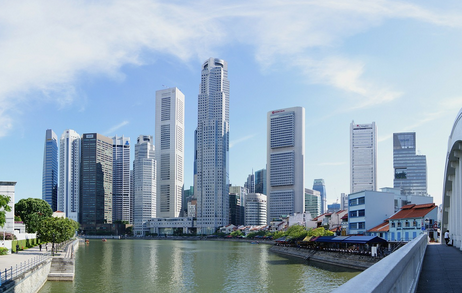Code Green Solutions


Sustainability reporting and leadership has evolved over the past 20 years to become focal points for the business community and larger society as we face a dawn of complex, interconnected challenges, and disclosure and efficiency requirements across different countries and markets. I recently held a discussion about the trends of and links between reporting and leadership with two leaders in the Asia corporate responsibility community:
Our discussion began by focusing on the use of sustainability reporting and Environmental, Social and Governance (ESG) factors by the investment community, which mandate new reporting requirements from their investments. Ruben cited a recent Goldman Sachs statement indicating that ESG would become mainstream for the financial sector over the next few years. ESG, which evolved from the concepts of a ‘triple bottom line’ during the late 1900’s, was bolstered in 2005 by a United Nations Environment Programme (UNEP) report that emphasized a pseudo-fiduciary duty by investment managers beyond economic matters.
As we considered ESG use by banks, we looked out the two-story floor to ceiling windows at the Shangri-la lobby court and remarked about their relationship to the hovering haze from the Indonesia’s burning palm oil and timber plantations. Indeed, in the Asia market, ESG use still lags behind the rest of the world. A 2015 joint survey report by Mercer and LGT showed that only 50% of investments across Asia considered ESG factors in their investment analysis, compared to a global average of 76%. This gap in Asia was reflected in a 2015 World Wide Fund for Nature (WWF) report that found that of the 18 local banks across Malaysia, Indonesia and Singapore, only 4 integrated ESG factors into their credit decisions (3 in Indonesia and 1 in Malaysia). The report also noted that very few local banks are members of the Roundtable on Sustainable Palm Oil (RSPO), which seeks to bring accountability and awareness around responsible lending to the palm oil sector. There appears to be a few seeds of change, however, as local banks are slowly showing more interest in adopting some form of sustainable lending practices.
As the use of ESG considerations grows in Asia, the presumption is that so too will the demands and requirements for companies, especially listed ones, to be more transparent, inclusive and strategic in their reporting on sustainability concerns. Both Carrie and Ruben noted the coming mandates for companies listed on the Singapore stock exchange (SGX) to either “comply or explain”, due to take effect in 2017, after a consultation period this year.
As noted, Carrie’s primary focus is on helping companies understand, develop and use sustainability reporting for their and their stakeholders’ benefit. The most common reporting methodology is the Global Reporting Initiative (GRI). We spoke about the use of GRI in Singapore, where adoption of sustainability reporting has been slow, even though SGX was the first Asia exchange to issue guidance in 2010, recommending the use of sustainability reporting. Yet as of 2014, of the 700 listed companies on SGX, only 27 issued GRI reports.
There are some bright stars leading the way for sustainability reporting in the ASEAN region. Carrie and Ruben noted one such organization, City Developments Limited (CDL), a prominent real estate development company in Singapore whose leadership has helped to shape industry practices and set a standard of Green Mark compliance in all of its properties. Other organizations using GRI reporting include firms in Indonesia, such as PT Kaltim Prima Coal, whose reporting efforts helped it to better understand its sizable impacts across the environment and local communities. In Malaysia, DiGi.com, a mobile telecoms company, was able to improve levels of awareness in the organization and enhance their reputation as a result of their GRI reporting efforts. And Holcim Philippines Corp, a cement company, were able to track some of their impacts over time, innovate new methods of production, and improve performance across GHG emissions by 11%.
While these accomplishments are laudable, we discussed some of the coming challenges that go beyond just ‘comply or explain.’ Carrie noted that her aspiration is to help organizations truly balance their impacts across economics, society and the environment and to incorporate sustainability risks into the business strategy – to ensure that “voices from many different places” are adequately heard and accounted for. And as more complex challenges are understood, she noted, companies will be required to expand the social, environmental and ethical issues they consider and report on, especially those associated with supply and distribution chains.
Ruben and Carrie noted that leaders, such as Esther An, CDL’s Head of CSR, will be tasked to look forward and foresee challenges, and work to prepare the organization, not just react to them when they arrive. Drawing from Robert Kaplan, a professor at the Harvard Business School, effective sustainable leadership will need to build on this foresight by 1) identifying and articulating a clear sustainability vision and commitment, that creates a prism by which to view and judge issues and behaviors, 2) setting priorities from that vision that generate commitments and accountability, 3) creating alignment that breaks down the silos within the organization, connecting and communicating across the behaviors and values within the culture and 4) driving an action plan that lays out how to accomplish the sustainability priorities and vision.
In Asia, we need to work together to help generate new understandings of leadership, new understandings of our own fiduciary duty, to create collaborative levels of vision and priorities, finding ways to jointly integrate the larger goals of social and environmental sustainability into the business strategy of each
Article originally posted at gresb.com.